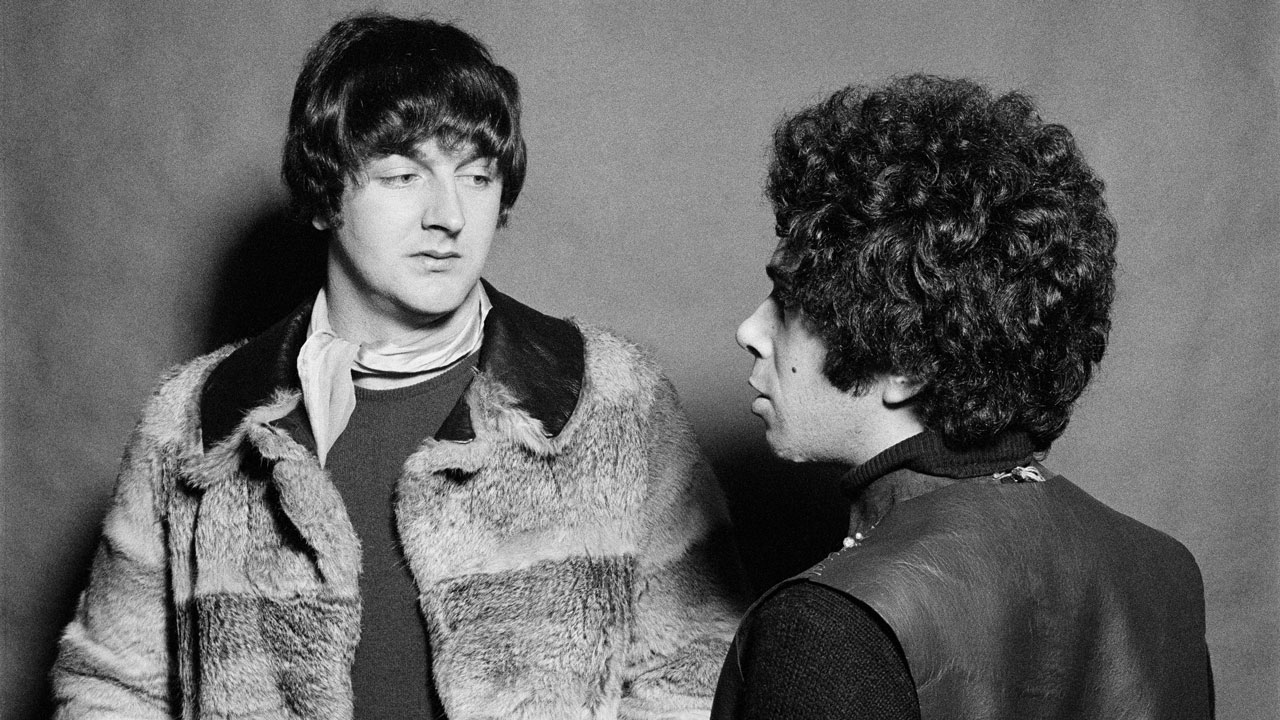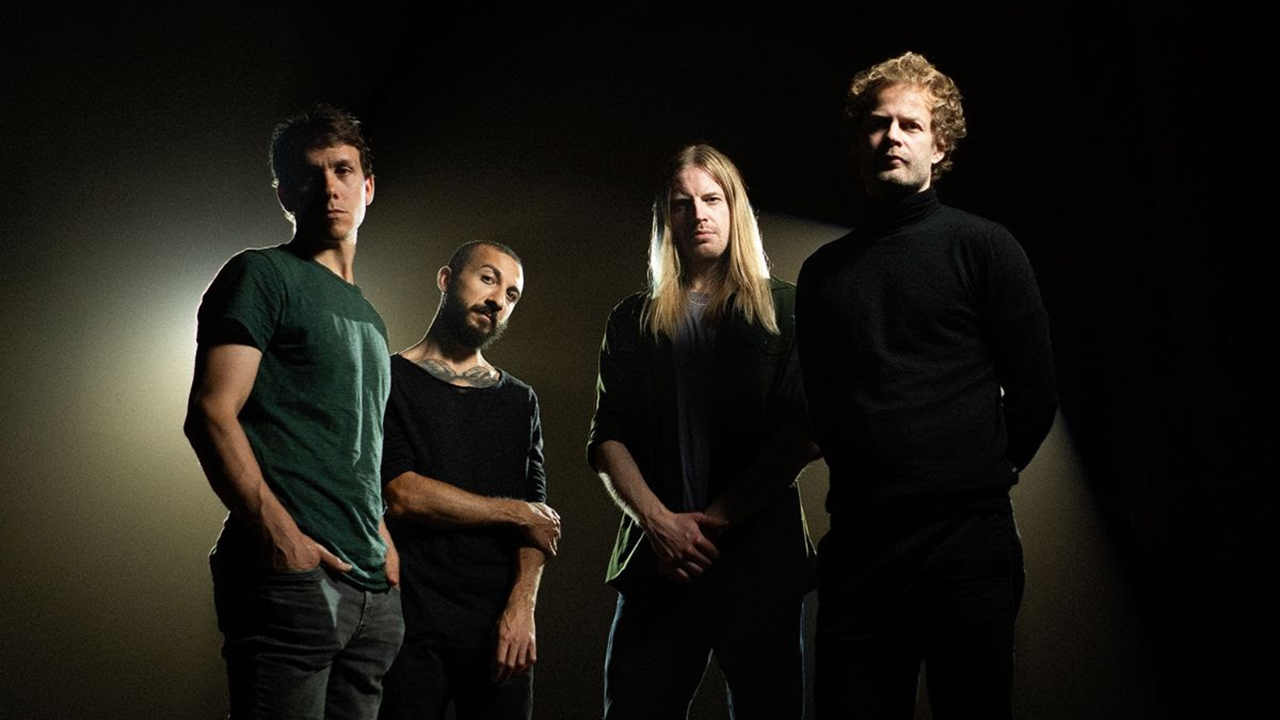Rainbow Chasers: how 60s duo Nirvana caught Salvador Dalí's attention
Here's the story of London-based baroque pop duo Nirvana who became unwitting prog trailblazers when, in 1967, they released one of the first concept albums, The Story Of Simon Simopath

Nirvana duo Patrick Campbell-Lyons and Alex Spyropoulos come from a time before the term ‘progressive rock’ existed, psychedelia exploding all around when Tiny Goddess manifested with exquisite baroque loveliness as their Peel-championed first single in July 1967. Three months later, Nirvana’s The Story Of Simon Simopath pipped The Moody Blues’ Days Of Future Passed by a month as the first modern concept work and rock album released by Island Records.
The first song to deploy ‘phasing’ all the way through, Rainbow Chaser was Nirvana’s minor hit that became their signature classic in 1968, appearing alongside Traffic, Jethro Tull and Fairport Convention on You Can All Join In, Island’s budget-price sampler that crystallised and propelled progressive rock into the UK Top 20. Having beaten the Third Ear Band as first to use an amplified cello onstage, Campbell-Lyons and Alex Spyropoulos laid further prog templates touring European cities accompanied by classical musicians hired from local orchestras to play their ornate arrangements, presaging Deep Purple and Procol Harum.
Such lofty qualifications, along with Campbell-Lyons’ early 70s stint with Vertigo, place Nirvana as unwitting trailblazers at the birth of British prog and are consolidated on current release Songlife: The Vinyl Box Set 1967-1972, which covers their five albums, plus 1972’s unreleased Secrets.
Born in County Waterford, Ireland, in 1943, Campbell-Lyons hit the UK and Ealing Art College at 18, the seismic local R&B scene propelling his forming Second Thoughts with future uber-producer Chris Thomas. Playing the vibrant London club circuit, the band worked up to supporting the Stones before splitting in 1965. Recording demos with Thomas in summer 1966 took him to Denmark Street’s publishing epicentre and lifeblood café La Gioconda, where he clicked with keyboardist Alex Spyropoulos, who’d gone to school in Athens with Vangelis and had a loose band.
First called Birth, then Karma, before settling on Nirvana, they worked up songs including Tiny Goddess, Pentecost Hotel and Rainbow Chaser. Doing the rounds of London’s producers led to Island supremo Chris Blackwell and it was the duo’s performance of Tiny Goddess at his Oxford Street office that earned them a record deal.
“We were the first band on Island,” says Campbell-Lyons, who now lives in Greece near his old friend Alex. “When Blackwell signed us, people were saying we were their Procol Harum with that baroque thing. Maybe he thought we could become his Procol Harum, but he never said it and we never said it. Nirvana were a progressive band, even in those days, but that wasn’t the word we used. We didn’t want to be pigeon-holed.
“If Blackwell didn’t like you as a person, he wouldn’t sign you, no matter how good you were. He had to feel a connection. He asked us, ‘Do you want to be a band or two songwriters recording stuff?’ We chose the latter. He said, ‘Okay, I’ll do whatever it takes.’ He was always a man of his word.”
Sign up below to get the latest from Prog, plus exclusive special offers, direct to your inbox!
As Nirvana’s producer, Blackwell started by bringing in veteran arranger Syd Dale for the orchestral arrangements integral to their sound. “A big part of everything we did on those first two albums was down to Syd Dale. We got on well and would sit with him discussing ideas, like throwing in, ‘This could be good if we had two double basses playing together.’ Next day, we’d be in the studio with a 36-piece orchestra and rhythm section. We had the best players, our own Wrecking Crew.”
Tiny Goddess was Island’s first pink-labelled single. Like many, this writer first heard its swooning magic on pirate station Radio London, getting to No.24 in their Fabulous 40 after John Peel made it his ‘climber’ in late July. Instead of it appearing on the album Nirvana were recording, Blackwell insisted on new songs. The world’s first concept album was already brewing around Campbell-Lyons’ story about Simon Simopath, who dreams of having wings, hates school’s bullying deadbeats and, on hitting adulthood, suffers a nervous breakdown, ending up in a psychiatric hospital before boarding a rocket ship, meeting a friendly centaur and falling in love with a tiny goddess at the Pentecost Hotel.
Campbell-Lyons claimed he got Pentecost Hotel from a dream, where it was painted on a ship sailing under water, igniting the Dalí-informed surrealism that influenced his lyrics on Nirvana’s second single. Maintaining the gossamer chamber psych seduction, Pentecost Hotel boded well for the album, which didn’t disappoint as the story unfolded through Wings Of Love and Satellite Jockey; ambitious for the time, sounding innocent and childlike now.
“The concept developed itself as we went along,” says Campbell-Lyons. “I never thought about it much until people started saying we had the first concept album. ‘Oh yeah, it seems that we did.’ Historically, that album is as popular today as it ever was. People are discovering it all the time.”
Nirvana first took their album to the stage at the hip Saville Theatre with labelmates Traffic and Spooky Tooth. Using props to construct a drawing room and starting with Tiny Goddess, they were joined by the Nirvana Ensemble who’d played on the album, including guitarist Ray Singer, bassist Brian Henderson, classically trained cellist Sylvia Schuster and French horn player Michael Coe. The band didn’t last, soon replaced by the pick-up orchestra routine when Nirvana proved in demand at Europe’s capital cities.
Their most memorable engagement was in July 1968 on French TV show Improvisation On A Sunday Afternoon with Salvador Dalí, which saw the artist splashing them in paint as they performed. Afterwards, an impressed Francoise Hardy covered Tiny Goddess in French, German and English.
In May 1968, Nirvana’s Rainbow Chaser reached No.34 in the UK Singles Chart. Although phasing, or flanging, had been used on the Small Faces’ Itchycoo Park, this was the first time it was all the way through a song, which was startling at the time. Nirvana assembled for Hipgnosis’ sleeve photo for You Can All Join In – Rainbow Chaser appeared on the spring ’68 compilation – and kicked off September with their second album, All Of Us (aka The Existence Of Chance Is Everything And Nothing While The Greatest Achievement Is The Living Of Life, And So Say ALL OF US). It was the gateway to robust ditties Trapeze and St John’s Wood Affair. After 20th Century Fox execs heard the title track, it became the theme to psychedelic B-movie The Touchables.
Like its predecessor, All Of Us didn’t sell by the bucketload, more destined for future appreciation as an era gem. By late 1968, Traffic had become Island’s flagship band, and they were soon joined by the heavier Free, King Crimson and Mott The Hoople.
“Blackwell tended to have ‘love affairs’ with his bands,” recalls Campbell-Lyons. “He had a thing for us for a year and a half when we were like his golden boys. The golden boy after us was Paul Samwell-Smith, who brought in Cat Stevens. Free were his babies for about a year. He tended to move like that.”
In 1970, Blackwell rejected the group’s cinematic third album, Dedicated To Markos III (or Black Flower), which was eventually briefly released on Pye. “Black Flower is our favourite album. We had another talented arranger called Johnny Scott and different people involved, including Chris Thomas. When we played it to Chris he said, ‘This is not for Island any more. You’ve gone too far left-field.’ He compared it to the music from A Man And A Woman, a very famous French movie. For me, that was a big compliment! Some of our best songs are on there. It’s still a favourite of many of our fans.”
With Nirvana’s first phase interrupted, Campbell-Lyons and Spyropoulos “made an amicable decision to say, ‘We had a good shot for three years, let’s do something different separately.’ I had a few ideas and Alex got a little budget from Island for a project he had.”
Through contacts at Philips, Campbell-Lyons demoed songs in the label’s basement studio at Stanhope House. Helped by benevolent arranger Johnny Franz, he decided to produce himself. “I’d watched the way people like Jimmy Miller, Chris Blackwell and Tony Visconti worked with us at Island, so decided I would produce my own albums and took it from there. Johnny Franz helped a lot with basic schooling, how to approach something. Scott Walker used to come in and routine his songs with Johnny three times a week. It was really something special.”
Discovering Campbell-Lyons’ Island past, the A&R department of Vertigo, Philips’ prog offshoot, recruited him as a talent scout. “They hired top men but had nothing from the underground, just good bands that made one album. I didn’t want another Cressida or Fairfield Parlour. I started looking for crazies, because I’m a little crazy myself. I saw a nice little band in Acton called Clear Blue Sky; heavy metal before it existed. I brought them into the studio and made an album in a day. Roger Dean was doing the covers upstairs. There was also Dr Z, which now goes for three grand.”
The new Nirvana album was Campbell-Lyons’ main concern, its jazz-driven self-exorcism of past styles, divorce and amphetamine withdrawal influenced by Frank Zappa and witnessing Miles Davis at 1970’s Isle Of Wight Festival. Joined by pianist Pete Kelly, horn man Mel Collins and Jade Warrior percussionist Jon Field, 1971’s astonishing Local Anaesthetic kicked off with side-long collage Modus Operandi, side two’s Home emoting five shorter movements.
“Many Nirvana fans prefer that to the Island albums!” he says with a laugh. “I needed to get all the Tiny Goddesses and Pentecost Hotels out of my system to be able to move forward. I knew it was going to be bizarre. Modus Operandi became just a totally free improvisation with snippets of lyrics and thought and dreams and LSD. I’d say it’s as progressive as you can get.”
Pipes cleared, 1972’s Songs Of Love And Praise was mellower, infused with spiritual optimism on Lord Up Above. Sylvia Schuster also returned as Campbell-Lyons revisited Rainbow Chaser and Pentecost Hotel with a kiddie choir.
After two years apart, Campbell-Lyons and Spyropoulos reunited and decided to write the musical that provides the box set’s real revelation, now finished and titled Secrets. Thanks to Campbell-Lyons’ distinctive voice and the duo’s sense of melodic exploration, it’s instantly recognisable as Nirvana as they tackle ballad, novelty and showtunes.
“Nirvana fans were always asking about it,” says Campbell-Lyons, revealing Netflix ambitions for the work. “It was originally a buddy story called Blood, about a vampire in Soho, then became based on Patty Hearst being kidnapped by the Black Panthers and deprogramming, all the time bringing in scriptwriters. When we couldn’t get it financed, we put it away in the bottom drawer and didn’t touch it for 36 years.”
Nirvana’s monumental box set is perfectly complemented by this quote from Campbell-Lyons’ vividly thrill-packed 2009 memoir, Psychedelic Days 1960-1969: “To this day, people ask me what it was like being in at the beginning of Island, a label now spoken of as legendary. My answer is always the same: Listen to the music… it will tell you everything.”
Kris Needs is a British journalist and author, known for writings on music from the 1970s onwards. Previously secretary of the Mott The Hoople fan club, he became editor of ZigZag in 1977 and has written biographies of stars including Primal Scream, Joe Strummer and Keith Richards. He's also written for MOJO, Record Collector, Classic Rock, Prog, Electronic Sound, Vive Le Rock and Shindig!

